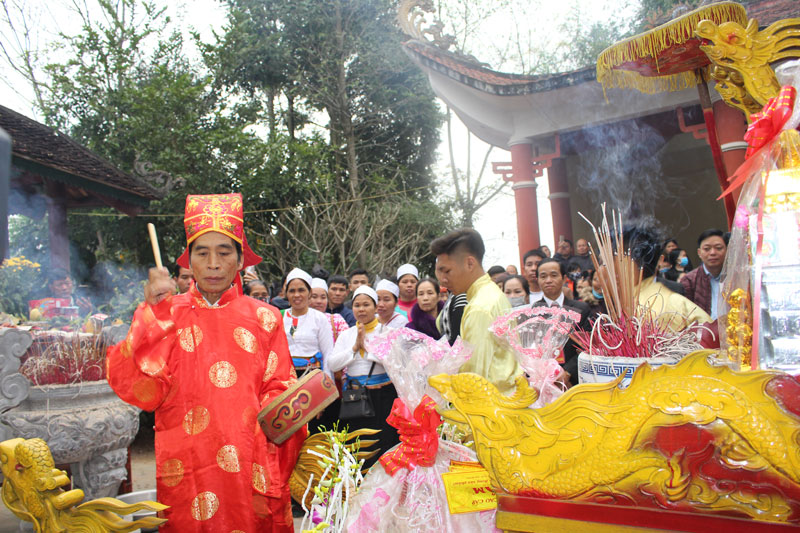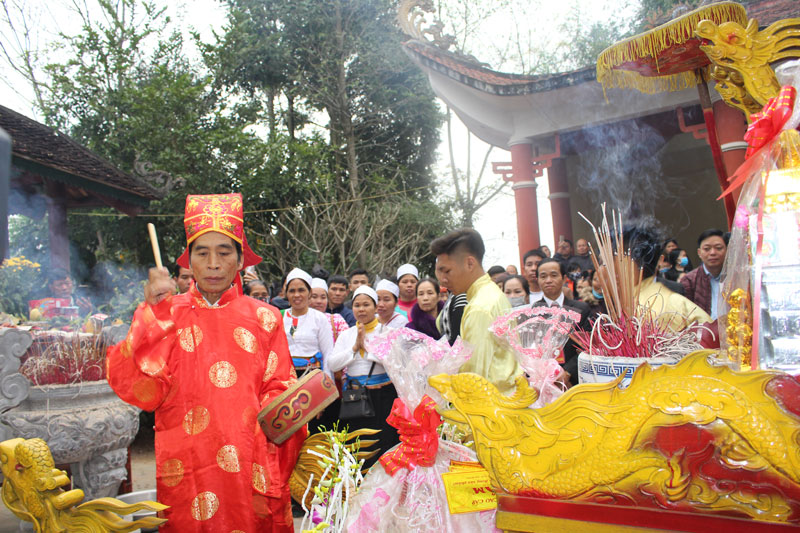


 Mo artisan of Phong
Phu commune (Tan Lac) are implementing Mo Muong ceremony at Khai Ha Festival in
Muong Bi in 2020.
Mo artisan of Phong
Phu commune (Tan Lac) are implementing Mo Muong ceremony at Khai Ha Festival in
Muong Bi in 2020.
Thanks to that, they have proactively been passing down by words, practicing and performing Mo songs and fine customs relating to Mo Muong through the generations of the families, the lineages and the community to conserve, preserve and promote the unique cultural values of Mo Muong. They also regularly exchange information, introduce and transmit Mo songs and Mo families, performing the rituals of the Mo Muong in the ceremony of Mo ghosts according to the conventions of the residential areas, which are not contrary to regulations of the law.
The cultural value of Mo Muong is widely propagated among the cadres, the party members, the civil servants, the public servants, the members of the Communist Youth Union, the students and the local people, contributing to raising the awareness of both political system and the local people so that they respect and consciously conserve, preserve and develop it. The district has also actively coordinated with the Department of Culture, Sports and Tourism to synthesize the inventory results, making the records of the cultural heritage to submit to the Ministry of Culture, Sports and Tourism for the decision to recognize Mo Muong and Muong gongs as the national cultural heritage, which participates in building a roadmap for making the scientific records to submit to UNESCO for the recognition of Mo Muong as the intangible cultural heritage of the mankind. They have been coordinated with the communes, the towns and the researchers to review, investigate and make statistics on the shamans, Mo families, Mo songs and the tools of the shamans.
There are 180 major shamans practicing their jobs in the whole district. Of which, there are 41 shamans aged over 70 having a lot of knowledge, experience and human values of Mo Muong, the rest are the number of new shamans who have just started the profession, and they are only able to practice simple rituals. Five clubs named "Maintaining and promoting cultural values of Mo Muong” have been established. The clubs have set up their own operating regulations, regularly have meeting and promote the efficiency.
Additionally, the district has focused on directing and guiding communes and towns to implement the work of preparing dossiers for the recognition of the excellent artisans. Up to now, the appropriate authorities have recognized the title of the excellent artisans of Mo Muong and the prescribed regime has been paid to 3 masters who have achievements in conserving, preserving and promoting the cultural values of Mo Muong, 1 artisan of Mo Muong has been awarded a medal for the cause of culture, sports and tourism. In addition, it is proposed to recognize 6 artisans of Mo Muong as the elite artisans. They have developed 23 programs and reports on conservation and promotion of the value of Mo Muong broadcasted on radio and television. They have also been strengthening the collection, making into books and distributing CD of "Mo Muong in Tan Lac” to serve propaganda, archive and promotion of the values of Muong Mo.